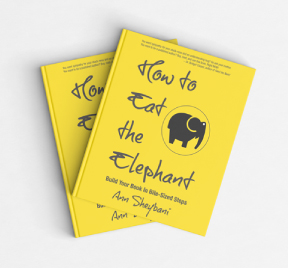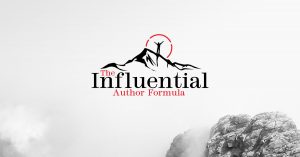Writing
Mean people on Amazon
August 2, 2020
I got this note from one of my clients recently:
I was reading some reviews on Amazon associated with books on my topic and I would have to look at my browsing history to see which ones they were but some reviews were awful. People complained that just because some techniques worked for the author, they didn’t work for them and they didn’t care to read about her life events. I don’t want to have readers think the same of me and my book.
So, I’d like to unpack this concern for every writer who worries about this very thing.
Really, there are two fears for the price of one, which makes it all the more paralyzing. (Like you need another reason to avoid your keyboard.)
The first concern is this: I’m going to get criticized. I’m going to put my heart and soul into a book and get publicly trashed, which will eviscerate me.
News flash: You can’t avoid criticism, so just roll with it. You can only do your best, hire professionals to save you from producing trash, then give it up to God, fate, or whatever force you believe rules the universe because at that point it’s out of your hands.
The second concern is this: If the reader is looking for a promised result—a system, a procedure, a process that will solve a problem—why would he or she want to read about me? Why should I insert my story into the mix?
This is actually a really good question and I’m going to come at it in stages simply because I could write 8 posts on this, and none of us has time for that.
Stage 1: We need a Face
I’m a huge fan of narrative-driven books, not just because of my aversion to mind-numbing textbooks, but also because we humans make sense of the world through stories. We’re hard-wired to look for faces, to look to the experiences of others to inform our thinking and actions. We’re constantly looking for models—examples of those who have succeeded and those who have screwed up. We want to know how others faced down particular problems, what they thought and felt in the process, what drove them to do what they did, what inspired them to change or reach for more. Before we can break away from our established routines and paradigms, the very glue that keeps us stuck where we are, we have to see how others did what we want to do; achieved what we want to achieve.
A list of action items or concepts just can’t capture these things.
Stage 2: Genre considerations
Can you insert too much of your personal story when writing a book?
Absolutely. Which leads us to the issue of genre.
If you’re writing memoir, the reader expects to learn all about you and your journey. In other words, you can’t have too much personal story. (Well you can, but that’s another post.)
If you’re writing self-help (or inspirational), however, the reader expects a mix of story and concept. The stories, be they the author’s personal experiences or client case studies, are there to ground the reader, to serve as the face, the model. Once grounded, the reader will then be receptive to the concepts and lessons you, the author, offer. Stories, you see, are the prerequisite to learning. They’re an essential part of the equation.
But you can often have too much personal story. It often takes some tweaking to get the right balance of story to lesson (see the bit on revision below).
There’s no one right ratio, by the way, it’s more of a feel thing. You’ll notice very different story-to-lesson ratios in various books in this genre. I often recommend finding a book with a balance you’d like to emulate and following trend.
Stage 3: Reader Relevance
The trick, beyond genre consideration, is making your personal story relevant to the audience.
The reader wants to know how the story you’ve chosen to share relates to her.
If I tell you a story about my alcoholic father, well, I need to draw a lesson from it that you can relate to. I’ll need to reframe it in some way that’s familiar to your situation and the solution I’m promising; otherwise, it will come across as gratuitous.
Every story we tell must have a point. On the other hand, every point we wish to make must be accompanied by a supporting story, otherwise, it will go straight over the reader’s head, or be instantly forgotten. (If I were you, I’d turn this here statement into a poster and hang it by your desk.)
Stage 4: Have Patience With the Revision Process
The writing process is a funny thing, which is why you need to take your time and work through a couple of drafts before you publish.
When we first begin to write, when we first begin to share the stories we suspect are integral to our books, to the solution we mean to provide our readers, we positively spew emotional crap.
Everyone we write about comes off as a heartless asshole whose sole purpose in life was/is, apparently, to fuck us three ways from Sunday. (I don’t know why this is the case, but I find it to be true with rare exception.)
When we first get these stories down on the page we have no idea what point we mean to make, we just feel compelled to get them out of our systems like puss from a wound.
It’s during the revision process that we begin to understand the role we played in the game. We begin to understand why others did the things they did, why we responded in a certain way, and how those unfortunate incidents changed the way we saw the world or how we behaved. We begin to understand how those stories shaped our journeys; sent us in search of the very same result/outcome/solution our readers are looking for.
It’s during the revision process that we are able to tease out the relevance of many of these stories for our reader. That we’re able to identify the lessons, the very ones that serve as breadcrumbs along the path to that big result.
Notice that I use the word MANY. Because some of these puss-filled stories will need to be excised because no relevant point can be drawn.
Trouble is, you won’t be able to tell which story is relevant, which is gratuitous, until you get them down and think about them a bit.
Believe me, this relevancy stuff, that’s what takes some thought and time to decipher. Which is why, when you publish too soon, your book can feel unfinished, a little confusing or random, half-baked.
The reader-relevance stuff is often the final layer.
So, to make an unintended long lesson short here’s what you need to do if you’re planning on including personal story in your book:
1. See these stories as part of the equation, the flypaper that will make your lessons stick
2. Understand the rules of your chosen genre
3. Draw points, lessons, conclusions from these stories that are relevant to your reader
4. Have patience with the revision process
5. Oh, and accept that no matter what you do, you will be criticized.



